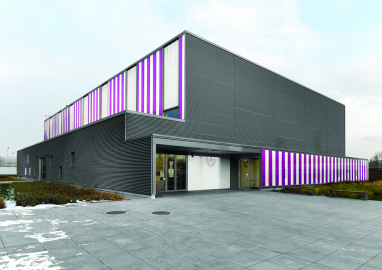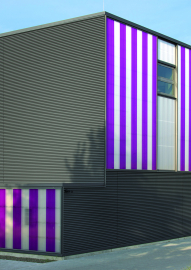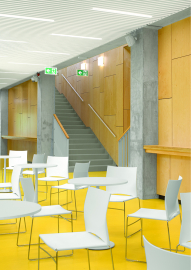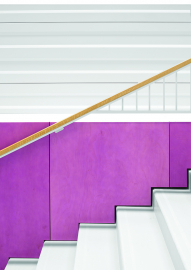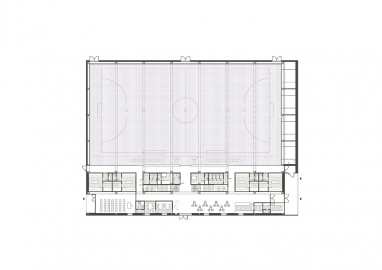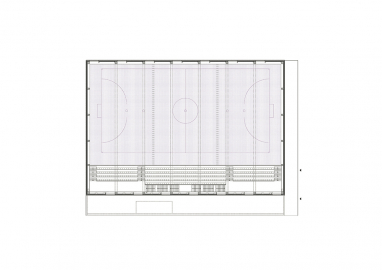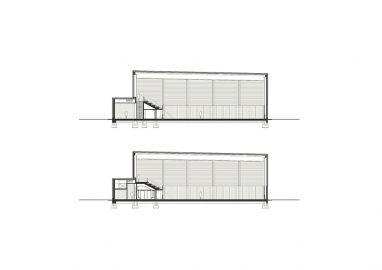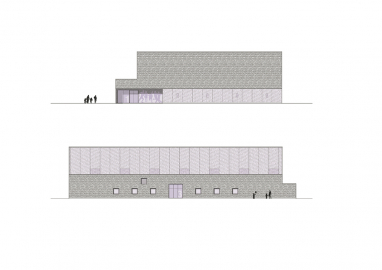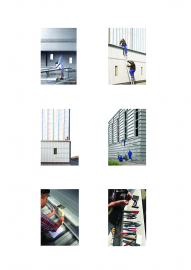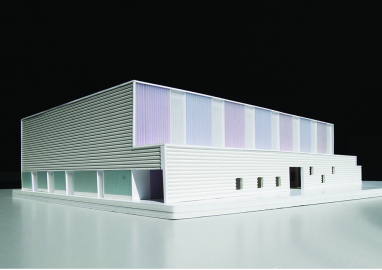Futsal Sport Hall
The hall is built as a development project of the UTE Sports Complex. Taking part in the programming, our goal was, on the one hand, to make as universal spatial structure as possible – so that it could accommodate various events. On the other hand, we aimed at creating a built environment with a strong atmosphere worthy of the past of the prestigious club.
The hall was built in the middle of the sports complex, surrounded by outdoor sports grounds. No morphological associations are provided or required by the site. Nowadays, the classic locations are in great decline, in connection with this our design possibilities are also changing. As a result of this situation, the building was formed along the architectural logic evolving from its own spatial structure. Thus, a tectonic mass composition was created that dissolves the long-span-dominated spatial scale through its articulation.
According to the architectural program, the building has a handball-size arena, a 300-seat grandstand, a 300-seat mobile stand, 4 changing rooms, a lobby, and a club room. It is suitable for accommodating NB1 futsal or European League volleyball events, and even for high school ceremonies.
In an environment with no morphology, our architectural strategy was to develop a design logic unfolding more from the interior. Accordingly, different functional units should have different structures, different masses, and different spatial atmospheres.
The sports hall has long-span prefabricated RC structure with mounted walls and large-panel-size openings; while the additional building parts of the lobby and the storages are short-span, masonry structures with window-like fenestration. The purple colors of the Club and the cool tones suitable for TV recordings prevail in the arena, and the opposite is true on the spectator side and in the lobby. The complexity is also projected on the exterior of the building, the mass composition of building units of different scales results in an additive mass form.
The interior space structure of the building is generous, thanks to the connections cut between the changing rooms placed under the grandstands upstairs, as this solution lets the sports arena be revealed at several points. The structured spatial organization provides a significant reserve for the functional possibilities of the facility.
The extremity of the fact that the building’s boundary structure is only 1.2 mm thick has led us in the direction of a dress-up-like architectural logic expressed in the choice of materials. Inspired by Semper and Loos, we have placed the quality of spatial boundaries and their expressive power in the focus of our work, in order to make the materials arranged by our hands.
The interior is defined by the materiality of the wall structures, the mounted materials, the concrete, and the wood; while the exterior is dominated by the dynamic appearance of the sinewave metal cladding playfully articulated with colored polycarbonate surfaces. We were interested in an honest display of raw building elements, products and joints, similar to some kind of involuntary DIY. Our goal was to create balance between the complexity arising from the natural presence of materials and the conscious orderliness. Two years of construction gave us time for an in-depth understanding of materials, and for the joint elaboration of the details with such craftsmanship unusual in the Hungarian industry. The construction, in Semperian terms, was like dressing a bride: tailoring, seaming, ironing.

